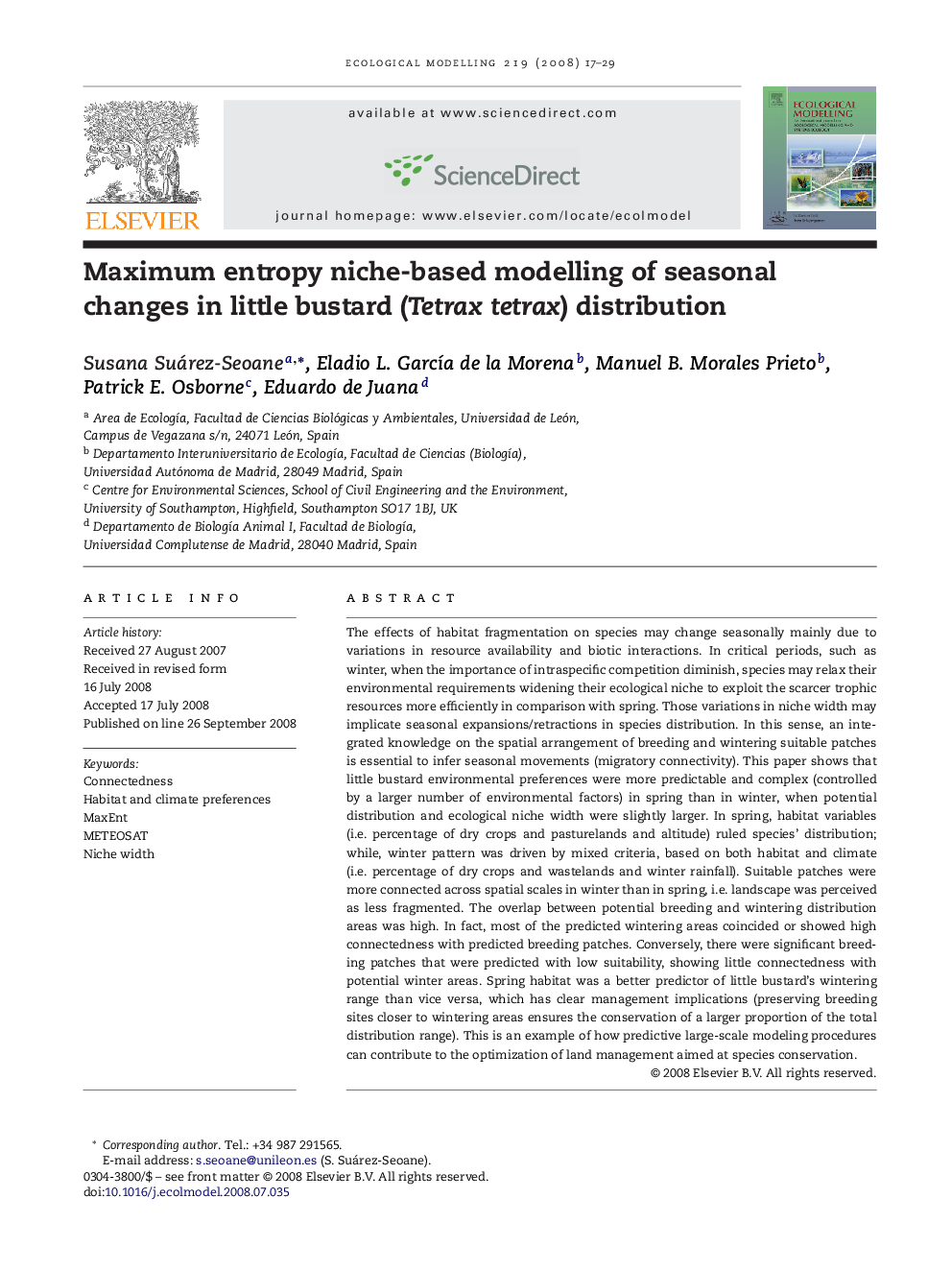| کد مقاله | کد نشریه | سال انتشار | مقاله انگلیسی | نسخه تمام متن |
|---|---|---|---|---|
| 4377799 | 1617526 | 2008 | 13 صفحه PDF | دانلود رایگان |

The effects of habitat fragmentation on species may change seasonally mainly due to variations in resource availability and biotic interactions. In critical periods, such as winter, when the importance of intraspecific competition diminish, species may relax their environmental requirements widening their ecological niche to exploit the scarcer trophic resources more efficiently in comparison with spring. Those variations in niche width may implicate seasonal expansions/retractions in species distribution. In this sense, an integrated knowledge on the spatial arrangement of breeding and wintering suitable patches is essential to infer seasonal movements (migratory connectivity). This paper shows that little bustard environmental preferences were more predictable and complex (controlled by a larger number of environmental factors) in spring than in winter, when potential distribution and ecological niche width were slightly larger. In spring, habitat variables (i.e. percentage of dry crops and pasturelands and altitude) ruled species’ distribution; while, winter pattern was driven by mixed criteria, based on both habitat and climate (i.e. percentage of dry crops and wastelands and winter rainfall). Suitable patches were more connected across spatial scales in winter than in spring, i.e. landscape was perceived as less fragmented. The overlap between potential breeding and wintering distribution areas was high. In fact, most of the predicted wintering areas coincided or showed high connectedness with predicted breeding patches. Conversely, there were significant breeding patches that were predicted with low suitability, showing little connectedness with potential winter areas. Spring habitat was a better predictor of little bustard’s wintering range than vice versa, which has clear management implications (preserving breeding sites closer to wintering areas ensures the conservation of a larger proportion of the total distribution range). This is an example of how predictive large-scale modeling procedures can contribute to the optimization of land management aimed at species conservation.
Journal: Ecological Modelling - Volume 219, Issues 1–2, 24 November 2008, Pages 17–29